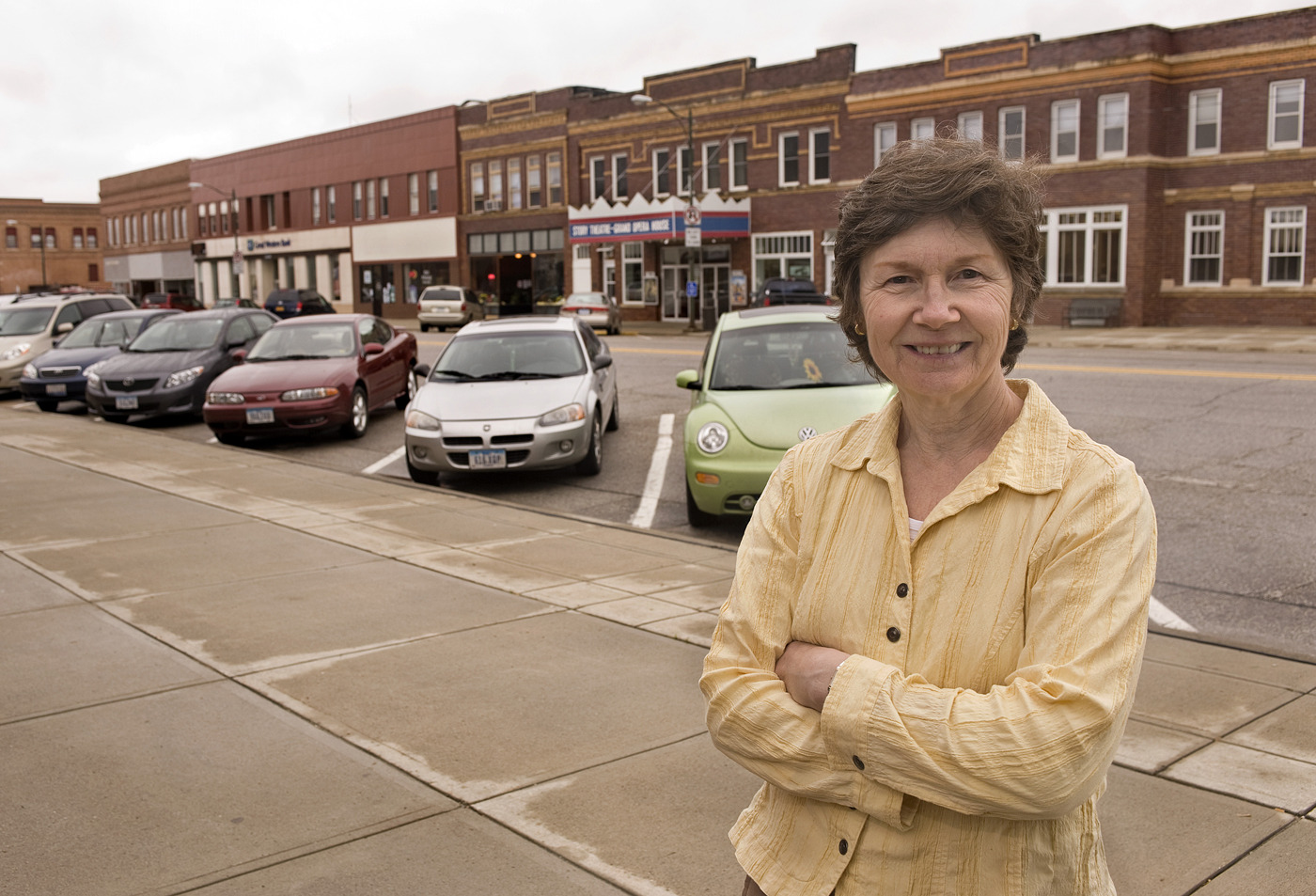
Terry Besser and a team of Iowa State researchers will survey residents in 99 Iowa towns to see how quality of life has changed over the past 20 years. Photo by Bob Elbert (Larger image)
AMES, Iowa – Time has changed many of Iowa’s rural communities. Strengthening these towns starts with understanding how social capital and leadership influence development in a small town. A group of Iowa State University researchers has tracked changes in quality of life and social capital in 99 Iowa towns since 1994. This month, they begin a third, two-year study to determine if the changes have continued.
Terry Besser, a professor of sociology and the team lead for the project, says social capital refers to the relationships and trust between residents that can be used for the good of a community. Previous research has shown an association between high social capital and community economic prosperity, the availability of recreational and cultural amenities, and high quality public services.
“Small towns often don’t have much in the way of financial resources,” Besser said. “If they’re able to marshal their social capital, they have a network of people they can call on who trust each other to get things done.”
Iowa State researchers first surveyed residents in the 99 towns in 1994 and then 10 years later in 2004 to gauge their opinions on local quality of life and other community features. Besser and colleagues Stephen Sapp, a professor of sociology; Deborah Tootle, an associate professor of sociology; and Georgeanne Artz, an assistant professor of economics; will send a third round of surveys for residents in those towns to complete in May and June.
The project, funded by a grant from the USDA National Institute for Food and Agriculture, also includes an in-depth analysis of six communities starting in 2015. At that time, researchers will look at development strategies, leadership structure and processes, and assess local amenities to evaluate the effectiveness of various kinds of strategies over the last 20 years.
While researchers reported an overall decline in social capital between 1994 and 2004, Besser says some communities sustained or improved their level and she expects the positive results will be reflected in this latest study. Overall civic engagement also dropped during that 10-year span. However, volunteering in community improvement projects increased. Besser says that could be a lingering effect of previous social capital or the response to an event in which the need was so great it brought people together.
Not all social capital is equal
The feeling of belonging to a tight-knit community is a quality many people value in a small town. It is a bond that unites people, but unfortunately it can also exclude new residents, Besser said. In some cases, people who have lived in a community for 15 or 20 years may still be treated as an outsider. This type of social capital can have a negative effect on community growth and development.
“It discourages people from coming into the community. It also closes off avenues for some great ideas, lots of volunteer energy and tapping into outside resources,” Besser said. “It’s a potential weakness many small towns face.”
Towns where residents from different backgrounds (ethnicity, income, religion, and length of residence) work together effectively will have greater success in sustaining and improving quality of life than towns with tight-knit resident cliques. Besser says the leadership structure in small towns is also important. In some towns there may be one individual, family or organization that always initiates and organizes community projects. That person or organization generates financial support, organizes volunteers and makes the idea a reality. Besser says this can benefit the community in the short-term, but it is hard to sustain over the long-term.
A group of leaders who can work separately or as a team for community improvement can prevent the burn out often associated with a single “hub” leadership structure, Besser said. Depending on a single entity to provide leadership also gives it the power to veto projects and discourages other residents from participating or getting involved.
Identifying these issues will help the research team develop tools and programs that state policymakers and communities can utilize to enhance the quality of life in rural Iowa. Selected communities will receive an individual analysis of the survey results. Researchers will combine the data from all 99 towns to create an average or typical community that towns can use for comparison.